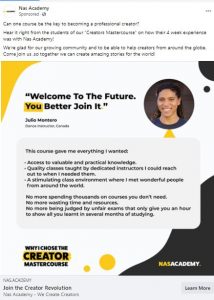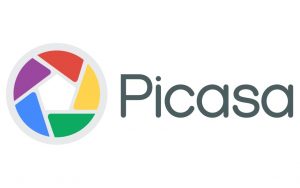What Are The CTA Buttons? What Are Their Characteristics?

CTA buttons are one of the important elements that you need to have on your website to create a high-converting landing page. You must have heard it hundreds of times because it’s a never-changing fact. It is considered as the door to the next steps of the sale funnel, where each click is one potential customer through that door.
A website with a strong CTA button is more likely to generate more conversions than a website with a weaker one. This article will let you know more about these CTA buttons.
What are the CTA Buttons?
CTA buttons stand for Call-to-Action buttons. It is a text, often combined with an image, that lets the audience know what they have to do next. It is the term used for clickable buttons on the website that solicits an action to be taken by the user.
In other words, your call-to-action buttons are the connecting bridge between the content the users want and an offer of higher value.
It is either a button, link, or an image that is ideally placed at the end of the blog posts to encourage visitors to become leads or potential customers.
Characteristics of High-Converting Call-to-Action Button:
Your call-to-action buttons are used when you want your users to do some action. In other words, the highlighted button is just a typical example of a call-to-action button you’d see on a normal landing page. Here are the top characteristics of high-converting CTA buttons:
- They are CTA buttons.
- They have a compelling copy.
- The best call to action uses a contrasting color.
- They have a logical placement.
- The most effective CTA buttons have close proximity to the previous action.
- Great call-to-action buttons aren’t forced to compete with other elements.
- Use the first person.
- Be super-specific.
Adding Effective Call-to-Action Buttons on Different Platforms:
You should not have to confine yourself to a single platform while using call-to-action buttons. You can use a different CTA for your AMP pages than you do for pages that render on desktops. Pop-up CTAs and CTAs on static pages can help the users to call the action.
Here are a few examples of CTA buttons.
- Firefox Browser:

2. Spotify:

3. Crazy Egg:

4. Ad Espresso:

5. Contently:

Adding Facebook Call-to-Action Options:

Nas Academy CTA button
Facebook can be used as a game-changer while targeting new members of your potential customers. It is easy to add call-to-action buttons on Facebook pages. Moreover, you can also provide URLs for mobile users to directly land on your homepage or your landing page.
Adding Instagram Call-to-Action Options:

Jio Mart CTA Button
You can successfully implement the call-to-action buttons on Instagram as long as you have an account in it. The basic CTA phrase options used are Email, Call, Text, and Directions. Moreover, CTA like Reserve, Book Tickets, or Start Over can also be used.
Conclusion:
Creating effective CTA buttons is not a complex process. As long as you can be in your users’ minds and you provide the simplest options to them, you are doing the right job.
How To Engage Customers With Monthly Or Weekly Newsletters?
Are you a business owner who is targeting your customers with newsletters? If so, are you able to successfully generate leads from your newsletters? If not, you need to understand how to use these email marketing strategies to generate new leads to an increase in your engagements.

Engaging Customers With Monthly Or Weekly Newsletters.
Many marketers try to create newsletters for everything, from blog posts to random promotional offers, where the product update section gets sandwiched in between them. Above all, your monthly or weekly newsletter loses its focus.
Customers who have signed up for your newsletters, don’t have the patience to wait till they actually get the meaning of your newsletters as soon as they read the topics. Moreover, after opening the newsletters, they need to quickly get what they should focus on and which call to action to take.
If your newsletters lack these abilities, your customers will feel lost and your email subscribers will be less engaged and less responsive.
3 Important Newsletter Elements:
The main objective of using monthly or weekly newsletters is to generate new leads and to grow the engagement email list. To improve the newsletter performance in lead generation, your newsletters must be:
- Relevant: The newsletters must be directly related to the customers’ industry, interests, and topics they are interested in.
- Interesting: The monthly or weekly newsletters must be interesting enough to entertain, educate, and please the customers.
- Valuable: The monthly or weekly newsletter must provide the customers with useful and researched information.
With these elements in your newsletters, you can manage to draw a consistent and engaged audience towards reading the newsletters.
We are sharing 7 amazing tips on creating newsletters that are relevant, interesting, and valuable.
Choose Your Goal:
Before setting up your goal, you must read your customers first. You need to understand the customers’ interest, their working sector, and the topics that they will find interesting and helpful. Moreover, you can conduct a survey to know what works better for your existing customers.
Keep It Simple But Catchy:
People don’t spend their time going through the emails piled up in their inboxes. So, your newsletters need to be on point so that the prospects get the object of the newsletter as soon as they open it.
Include Third Party Content:
Including content from others like thought leaders or influencers from your industry sector is a good way of associating experts with your brands. Moreover, you can also include quotes, tweets, or links from popular brands in your content.
Include User-Generated Content:
You can try switching the focus to your audience, customers, and even your employees. Here, you can include the interaction of your community, by sharing comments, highlighting the exclusive usage of product use, or provide FAQs on social media.
Connect to Trending Topics/Events:
Newsletters can be helpful in connecting their audience with popular topics or events or about the latest trends so that you can effectively include your brand within the conversation.
Use Social Media to Tease:
Social media provides an amazing platform where you can easily create a buzz around. You can use Twitter and Facebook to tease the customers with photos and gifs, and Instagram stories. Talk about the upcoming newsletter content and what they can get when they sign up for the newsletters.
Provide Consistent & Unique Content:
Your newsletter must be unique and the audience must not find it on any other website. In addition to that, you have provided a constant supply of these types of unique newsletters.
Check Out The Top 10 Company’s Digital Marketing Logos and Their Meanings
Here Are The Top 10 Company’s Digital Marketing Logos & Their Meaning
1. Beats:

Beats
2. Cisco:

Cisco
The leading giants of computer networking and the worldwide leader of internet technologies are named after its headquarters’ location in San Francisco. Although its namesake doesn’t have a hidden meaning, the blue stripes above the logotype not only represent an electromagnet but also, the Golden Gate Bridge.
3. Baskin Robbins:

Baskin Robbins
4. Vaio:

Vaio
5. Picasa:

Picasa
6. Le Tour De France:

Le Tour De France
7. Gamecube:

Gamecube
8. LG:

LG
9. Toblerone:

Toblerone
This is one of the most popular brands of chocolates and its current logo features a mountain. It symbolizes the Matterhorn Mountain in Switzerland. Hidden inside the mountain is a bear, symbolizing the unique honey flavor found in the chocolate. It is a fact that the chocolate is made in the ‘City of Bears’.
10. Audi:

Audi






